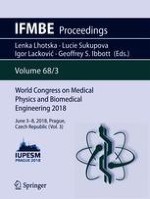2019 | OriginalPaper | Chapter
A Volumetric Delta TCP Tool to Quantify Treatment Outcome Effectiveness Based on Biological Parameters and Different Dose Distributions
Authors : Daniella Fabri, Araceli Gago-Arias, Teresa Guerrero-Urbano, Antonio Lopez-Medina, Beatriz Sanchez-Nieto
Published in: World Congress on Medical Physics and Biomedical Engineering 2018
Publisher: Springer Singapore
Activate our intelligent search to find suitable subject content or patents.
Select sections of text to find matching patents with Artificial Intelligence. powered by
Select sections of text to find additional relevant content using AI-assisted search. powered by
